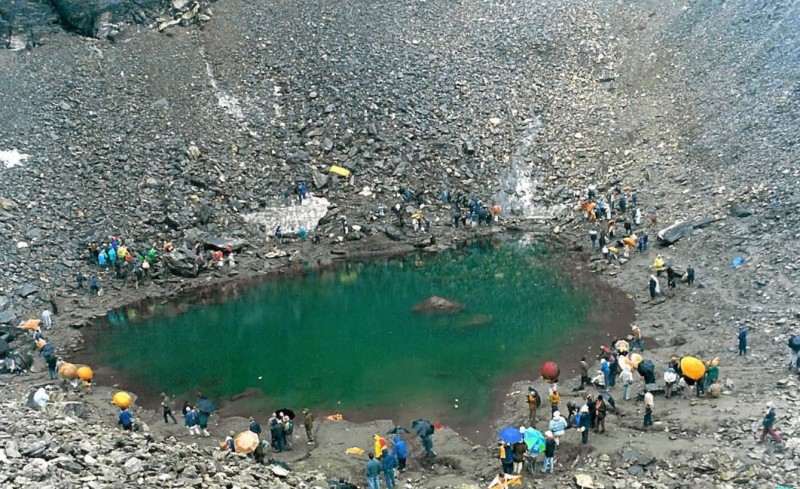
Roopkund Lake, nestled amidst the majestic peaks of the Indian Himalayas, has been a source of both wonder and mystery for adventurers and scientists alike. Located at an elevation of over 16,000 feet, this serene glacial lake has captivated the imagination of many due to the presence of hundreds of human skeletons scattered around its shores. The enigmatic nature of these skeletal remains has led to various theories and speculations, making it one of the most intriguing archaeological and anthropological sites in the world.
The Discovery of Roopkund Lake
Roopkund Lake was initially discovered during the British rule in India, when it was identified as a popular trekking destination. However, it was not until 1942 that a British forest ranger stumbled upon something that would forever change the perception of the lake. He came across a large number of human skeletons in and around the lake, sparking curiosity and confusion among the authorities and the local population.
Early Theories and Myths
The discovery of the skeletons at Roopkund Lake led to the emergence of several local myths and legends. One popular belief was that the skeletons belonged to an ancient royal procession that had incurred the wrath of the mountain goddess. Others speculated that the lake was the result of a catastrophic hailstorm that claimed the lives of pilgrims or an invading army. However, as intriguing as these stories were, they lacked substantial evidence to unravel the true mystery.
Scientific Investigations
In the following decades, scientific expeditions were organized to study the skeletons and understand the circumstances surrounding their demise. The remote and high-altitude location of Roopkund Lake presented numerous challenges for researchers. Harsh weather conditions and treacherous terrain made it difficult to conduct extensive studies.
Unraveling the Mystery
In recent years, advancements in scientific techniques have brought us closer to understanding the mystery of Roopkund Lake. DNA analysis and carbon dating have played pivotal roles in identifying the origins of the skeletons. Studies revealed that the majority of the remains date back to the 9th century and belong to people of diverse geographic origins, including India and Central Asia.
The Clues from the Past
Historical records and artifacts found in the region provided valuable insights into possible events that could have led to the presence of the skeletons. Some researchers believe that the skeletons might be the result of a large-scale pilgrimage or an ancient trade route crossing the high-altitude region. Others suggest that they could be the remains of an isolated community seeking spiritual solace in the mountains.
Theories Behind the Skeletons
Despite the progress made in identifying the age and origin of the skeletons, the cause of their mass mortality event remains a subject of debate. Scientists have put forward various theories, including the possibility of epidemics, natural disasters like avalanches, or ritualistic sacrifices to appease deities.
A Window into the Past
Roopkund Lake and its skeletons provide a unique opportunity to peer into the lives of ancient human populations. The study of these remains has the potential to reveal vital information about historical migrations, genetic diversity, and cultural practices that prevailed centuries ago.
Conservation and Preservation
With increasing interest in Roopkund Lake, there arises a need for conservation and preservation efforts. Researchers and environmentalists are working together to protect the site and its fragile ecosystem from the impact of tourism and climate change.
The Fascination of Roopkund Lake
Despite its remote location and challenging accessibility, Roopkund Lake continues to attract adventure seekers, history enthusiasts, and scientists. The allure of the mysterious skeletons and the breathtaking beauty of the surrounding landscape make it an unforgettable experience for those who visit.
Roopkund Lake and its hundreds of human skeletons remain an unsolved enigma, captivating the curiosity of researchers and visitors alike. While advancements in scientific methods have shed light on some aspects of the mystery, there is still much to be unraveled. The preservation of this unique site and further research will undoubtedly provide deeper insights into the ancient past and the stories hidden within the silent bones.
Cosmic Microwave Background Radiation: Tracing the Remnants of the Big Bang
If you're looking for beautiful and safe places to visit, then go to Karnataka